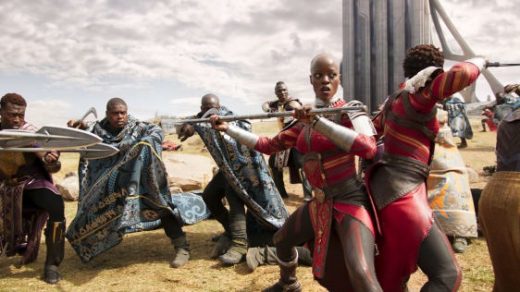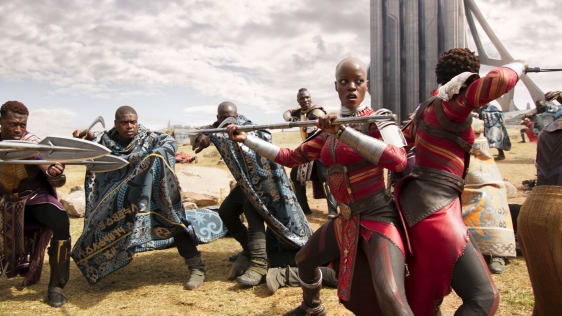Stuntwomen From Foxy Brown To Black Panther On Hollywood’s Hardest Job
By Paulana Lamonier
February 28, 2018
Picture a job that requires long hours, dangerous physical tasks, a high risk of injury, and enduring discrimination and a lack of opportunity.
These are the challenges faced by black stuntwomen.
In a 2016 survey, 18 out of 43 stuntwomen said they’d experienced sexual harassment in the workplace, and 26 out of the 43 said they knew colleagues who’d experienced this. However, for black stuntwomen, it’s more than sexual harassment they have to be concerned about–it’s a lack of job opportunities. Methods like wigging, where stuntmen wear wigs to play actresses, and paint downs, (also known as blackface) where they paint their skin a darker color to match the actress they’re doubling, prevents women from performing these stunts, according to April Wright, director of the documentary, Stuntwoman: The Untold Hollywood Story, based on Molly Gregory’s book.
It’s a rule in the Screen Actors Guide–American Federation of Television and Radio Artists’ (SAG-AFTRA) Stunt Safety Digest that stunt coordinators must hire stunt doubles close to the actor’s gender and race, yet a lack of diversity isn’t uncommon. For example, stuntwoman Deven McNair, who has more than 70 stunt credits, recently filed a sex-discrimination charge against a Hollywood production company and SAG-AFTRA, according to Deadline.
Work for stuntwomen is a simple equation: The more women in action roles means more stuntwomen. In that area, there has been a little progress recently. In the first quarter of 2018, four action-packed movies are being released with black actresses as their leads: Proud Mary and Acrimony, both starring Taraji P. Henson, Black Panther, which stars several black women, and Breaking In, starring Gabrielle Union.
To find out what it’s really like, we spoke to Keisha Tucker, Crystal Michelle, Alyma Dorsey, Carrie Bernans, Cheryl Lewis, and Jadie David, six stuntwomen who’ve kicked, punched, and trained their way into becoming the best and baddest stuntwomen, doubling for many A-list actresses. Here, they recount the lessons they learned, the importance of mentorship, and how those hard-learned lessons apply to black women everywhere.
Never A “Day Off”
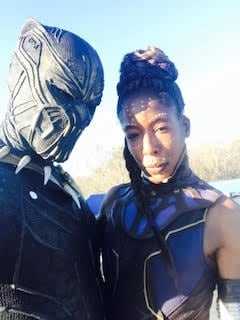
On workdays, stuntwomen are working eight to 10 hours at a time taking hits, getting pushed down a flight of stairs, or off 50-foot buildings. However, their days off are just as crucial. Stunt performers are in the gym at least four hours a day, training with other professionals, perfecting their craft, learning new skills, and networking their way to the next opportunity.
“You need to be ready and stay ready. This comes with the territory. You’re only good as your last job, so when you’re not training and staying on top of your daily routine, diet, and exercise, you’ll find yourself in a position that might be hard to get out of,” Michelle, who doubled for Shuri, T’Challa/Black Panther’s sister, says. “This is a very dangerous line of work. The smallest thing can go wrong in a split second. If you’re not staying on top of your discipline, your team’s training, and making sure you know where you’re supposed to be, it affects your performance.”
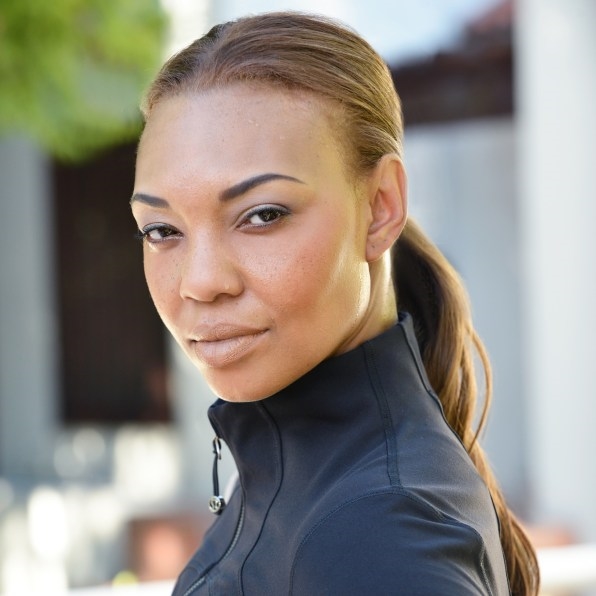
Twice As Good
Jadie David, who has experienced inequality in the stunt industry and has filed several lawsuits with the Equal Employment Opportunity Commission (EEOC), recalls how she parlayed those moments into strengths.
“The truth is, we’re jumping two hurdles. We’re jumping the hurdle of not being a white woman, and we’re jumping the hurdle of not being an African-American man, because the default goes to either one of those two, and we’re typically second,” David recalls. “It’s not going to take you backwards. It can actually propel you forward because you’re probably going to work twice as hard, and you’re going to build bigger muscles to be stronger.”
Alyma Dorsey agrees. She believes this fueled her fire to be undeniably good. “We have to out there and hustle. So, what do I need to do to make myself more prevalent in the community to make people want to hire me?” Dorsey asks. “What kind of skills do I [need to learn]?”
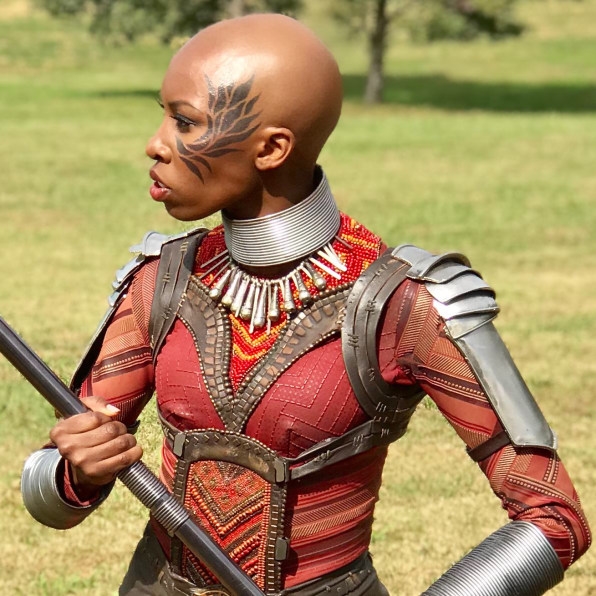
Stepping Out Of Your Comfort Zone
Some of the best opportunities are outside of one’s comfort zone — Carrie Bernans can attest to this. After being cast as a double for one of the Dora Milaje in Black Panther, she soon learned that she had to shave her head for the role. Bernans said the experience shaped her for the better.
“I’ve cut my hair several times, but I never shaved my hair off, ever,” Bernans recalls. “That was really the true warrior experience . . . And because of it, I have a very unique appearance with a bald head. I’m going into bigger auditions than I’ve ever been into, and it’s just been really, really great.”
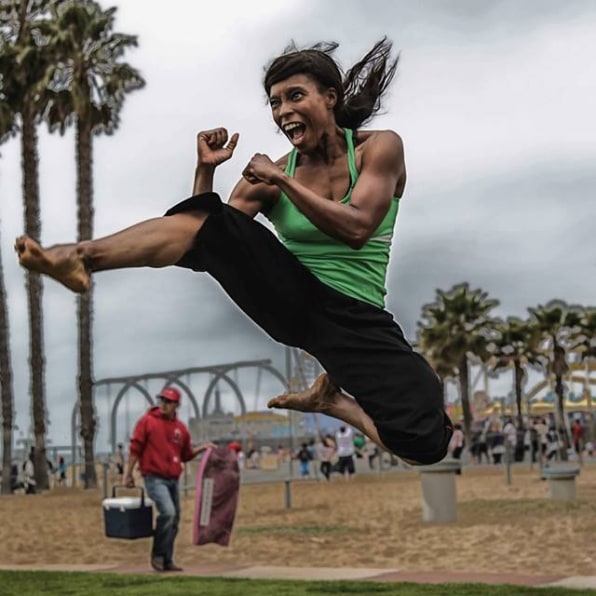
Never Stop Learning
Cheryl Lewis, who was Henson’s stunt double in the film Proud Mary, has years of experience in gymnastics, martial arts, dancing, and acting. But even with her 15-plus years in the stunt industry, she always finds ways to learn more.
“You have to start from point A to get to point F, and I think people want to start in the middle. Somebody will say, ‘I want to learn how to do a backflip,’ and I’m like, ‘Do you know how to do a back handspring?’ They don’t want to go through the process. They just want the big tricks first, and that’s not how I train,” Lewis says.
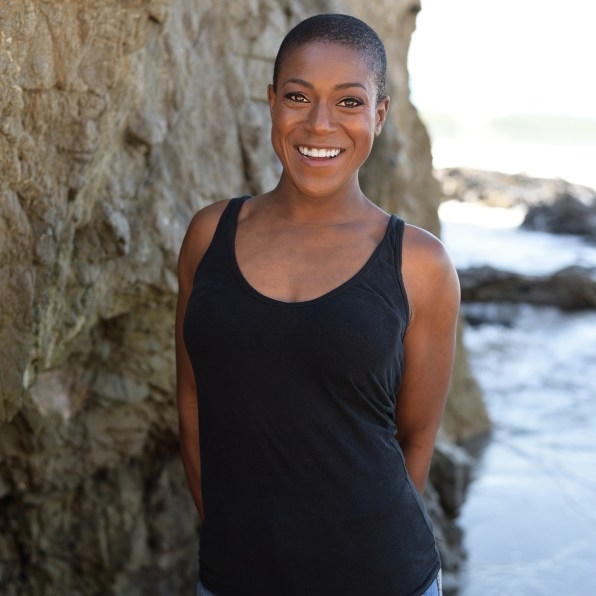
Find A Mentor
Despite the problems the stunt industry has, Dorsey, who doubled for Leslie Jones in the Ghostbuster reboot, Baywatch and just finished filming Tyler Perry’s Acrimon., explains how mentorship changed her perspective in show business.
“I have several people that have been in the industry for over 20 years that I can always call and ask them questions like: Do you know this coordinator? How are they?” says Dorsey. “Build relationships. Treat your career like it’s a business. Racism happens everywhere. Okay, now what? You do what you need to do.”
David, a retired stuntwoman who has doubled for Pam Grier in the 1974 Foxy Brown, affirmed that as novices are becoming savvy stuntwomen over time, it’s vital to pass the knowledge along like a baton to aspiring stunt professionals.
“There are always people who are willing to help and support you.” David counsels. “You must repay that kindness and pass it on. It’s not a choice. Somebody gave it to you. Give it to somebody else. This is not only about doing stunts. This is about life.
“The women who are coming up now are so talented.” says David. “I am so proud of where are these women have come to. They made everything we did worth it.
“You see these stuntwomen who are working in a male-dominated industry, and they’re doing it as good as the guys,” Wright says. “They’re talented, they’re athletes, they’re highly motivated. I think it’s really important to get those images out there.”
As the fight for equality and inclusion continues, these women show that though it may be hard to endure, when it comes to representation, it’s worthwhile.
Paulana L. Lamonier is a Haitian-American journalist who loves to tell compelling stories. She also loves Jesus, Beyoncé, and trap music—in that order.
Correction: A previous version of this article misidentified a quote from Keisha Tucker, that was from Alyma Dorsey.
(39)

